Angling Artist: Chris LaFrange
Chris LaFrange creates colorful tuna tail prints and preserved tail mounts to commemorate memorable catches by utilizing the fish in its entirety.
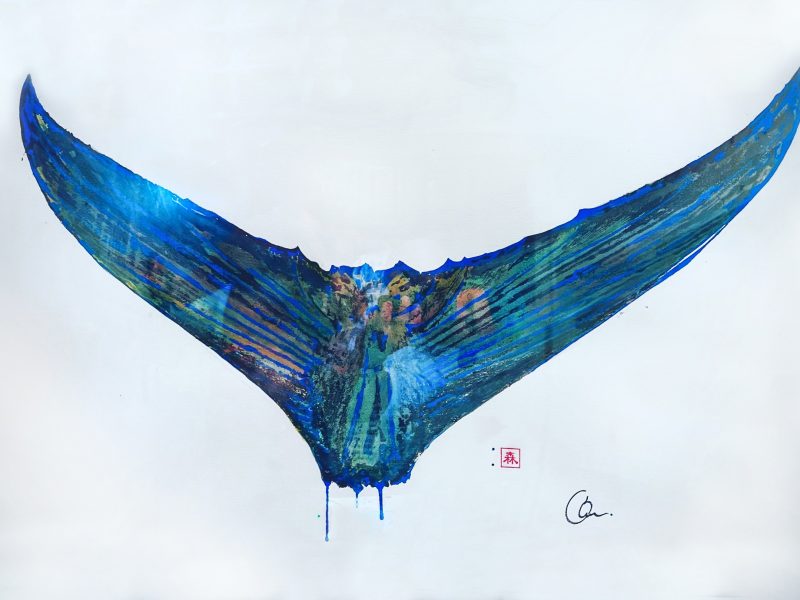
The first time I spoke to Chris LaFrange on the phone, he had just returned from a trip to Boca Grande, Florida, where he’d caught 10 trophy-class tarpon. When I finally met him a few months later while shark fishing on a dark, Upper Cape beach, he shared his slightly comical struggle with keeping a massive, recently caught thresher shark tail in his yard for several days. It didn’t take long to figure it out— Chris LaFrange is one fishy dude, in the best sense of the word.
Originally from Martha’s Vineyard, LaFrange was taught at a young age that fishing is a way of life. He was raised in the town of Aquinnah, where the Wampanoag tribe of Gay Head resides, and it was their cultural influence that played a major role in his still-growing passion for the sport and in his development as a dynamic angler. As he described it to me, “Fishing is in my blood.” The first fish he ever caught was a stocked brook trout from a Vineyard pond, which ignited his desire to decipher the bite going forward, whether it found him waist-deep in a trout pond or 30 miles south on the tuna grounds.
For the Wampanoag tribe of Gay Head, nothing goes to waste, a concept that later led LaFrange to repurpose tuna tails into commemorative art for the angler who caught the fish. In his youth, LaFrange took leftover bones from harvested fish and deer to create renditions of the animals that had provided sustenance for his family and friends.
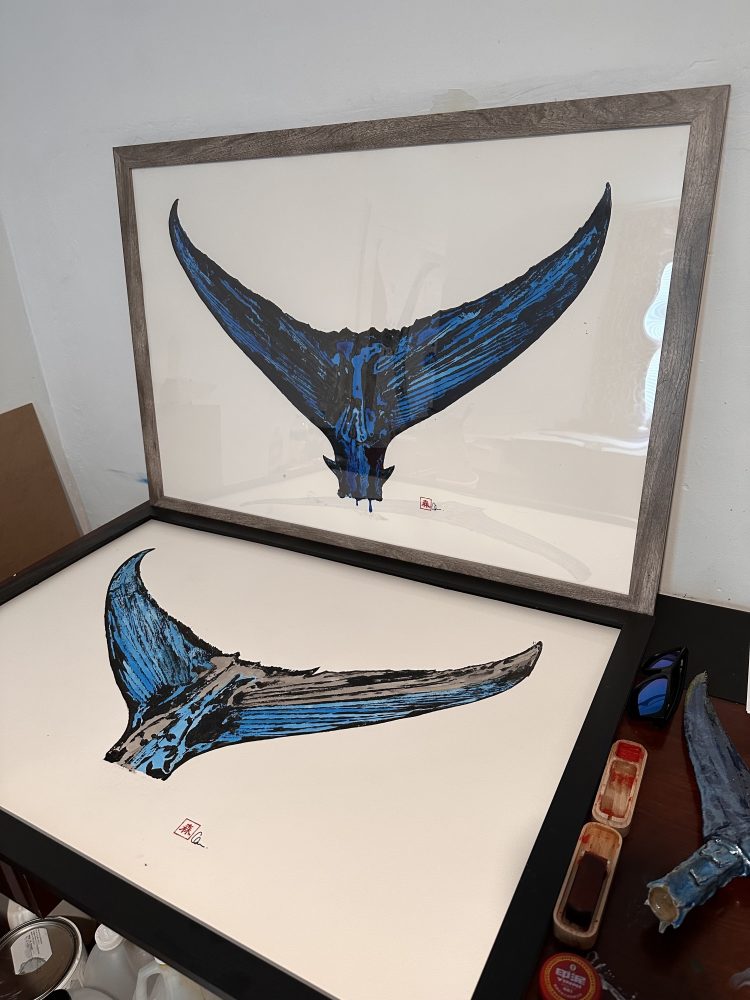
In high school in Falmouth, Massachusetts, he enrolled in basic art classes to strengthen his craft. Although he never felt like he fit in with the artistically-inclined crowd, LaFrange thoroughly enjoyed the being able creatively express himself. Eventually though, he prioritized business school and hockey, which detracted from his artistic focus until he began working with tuna tails.
In 2015, LaFrange started practicing fish prints with tautog and sea bass before graduating to bluefin tuna. After 5 or 6 rough prints using tuna tails from fish he had harvested over the years, LaFrange was unsure how his work would be received, but his wife encouraged him to publicly share it. In 2019, a friend of his took a liking to an epoxy-coated tail that he had nailed to a door in his home, which LaFrange describes as the moment he truly rediscovered his passion for art and realized the potential behind his unique work.
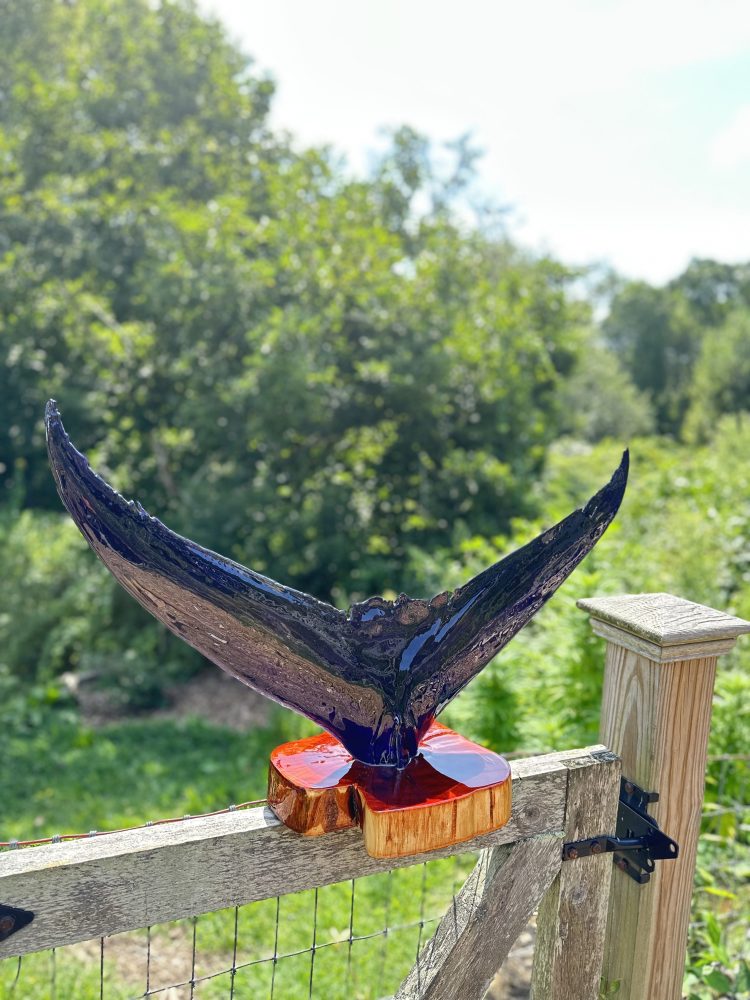
While there is room for creative expression in his tuna-tail prints and mounts, the treatment and painting process is not an easy one. By trial and error, he figured out the best method to preserve and treat the tuna tails so that they would provide the highest level of detail. By hanging tails on the fence in his yard to dry out, LaFrange battled the elements—along with coyotes and raccoons—which made it difficult to maintain desirable tail condition. Today, he preserves tails by hanging them in his basement for three months among three dehumidifiers that pull moisture from them. He painstakingly cleans them once a week with isopropyl to dry them out and remove additional moisture which, in turn, accentuates the finer details in the tail fin. It’s a long process that requires patience because any moisture in the tail will cause ink to smudge on the paper during the printing stage.
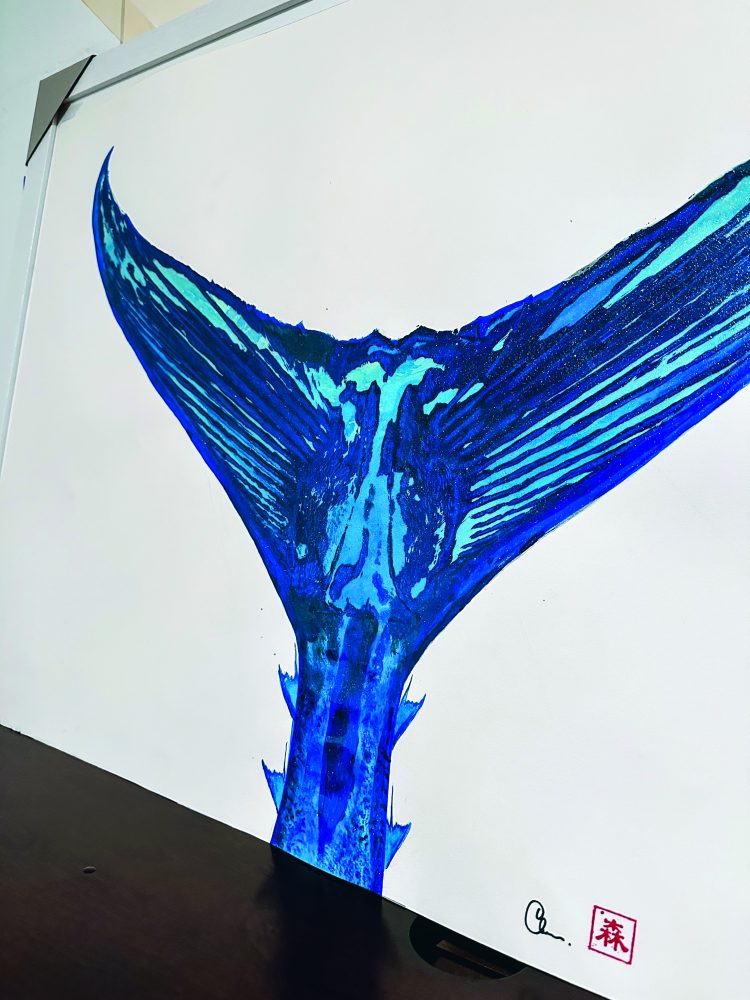
Adding colors to the tail for the final print is a 3-step process that LaFrange begins with black paint, which provides an outline on birch paper. Then, he repaints the tail with choice colors to give it personality, prints it again and, finally, wraps it all up with one last coat of color to fill in any gaps or blank spaces. The result is an acutely detailed, colorful work of art with sentimental value.
To this day, one of LaFrange’s most memorable works is the epoxied tail mount of a 700-pound bluefin that he gifted to his friend, Captain Ryan Hill, after Hill and his crew unexpectedly hooked and landed it on a slow-pitch jigging rod while fishing for bait last fall.
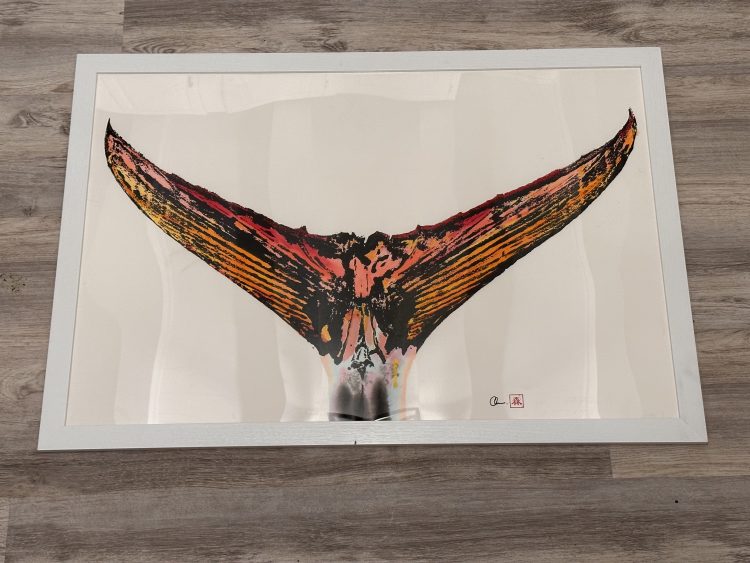
LaFrange sees his tuna-tail prints and preserved mounts as a way of carrying on the Wampanoag tradition, putting his own psychedelic spin on a form of art that, historically, left little room for ingenuity and individual expression. As our conversation wrapped up, LaFrange reiterated that nothing goes to waste in his studio. Instead, the memory of a catch of a lifetime is recycled into a vibrant print or dignified mount suitable for displaying on the fireplace mantle or in a trophy case.
1 thought on “Angling Artist: Chris LaFrange”
-
Troy Denson Your work is beautiful Chris! Nice job.
President
Troy Denson
MountThis.net
Leave a Reply